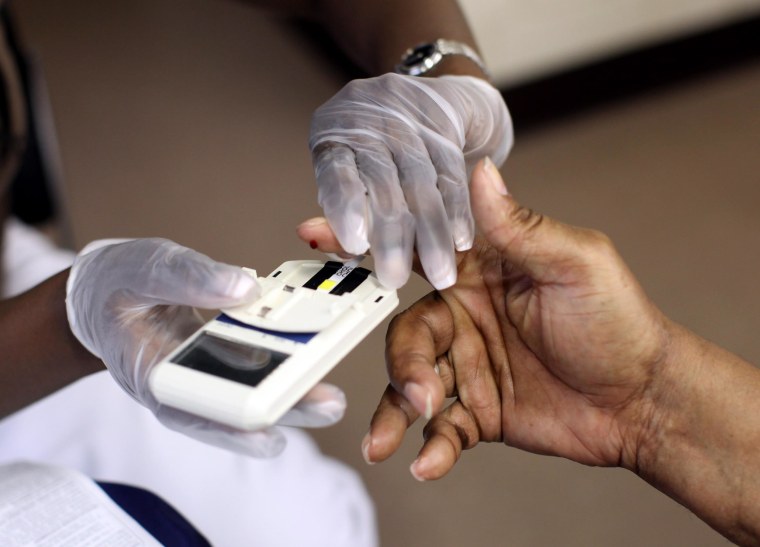All overweight adults over the age of 40 should get their blood sugar tested for diabetes, the U.S. Preventive Services Task Force (USPSTF) says in new recommendations, even if they don’t have symptoms of diabetes.
Those with high blood sugar but not diabetes should be sent for intensive behavioral counseling to promote a healthy diet and exercise that may delay or prevent the disease, the Task Force says.
The recommendations will affect a lot of people. Half of all Americans have diabetes or high blood sugar.
Diabetes directly kills more than 71,000 people a year, according to the American Diabetes Association. The Centers for Disease Control and Prevention says a quarter of Americans who have diabetes don’t know it.
In 2008, the government-backed USPSTF endorsed diabetes screening for people with high blood pressure but couldn’t find enough evidence to support the same screening for those who are overweight but with no symptoms of diabetes.
Since then, six studies found that lifestyle changes to prevent or delay diabetes are consistently beneficial, say the authors of the new recommendation, published in the Annals of Internal Medicine.
“The Task Force found screening adults ages 40 to 70 who are overweight or obese can identify individuals with abnormal blood glucose levels before it progresses to diabetes and that offering or referring them to intensive lifestyle interventions can help prevent or delay complications from the disease,” said Task Force member Dr. Michael Pignone of the University of North Carolina, Chapel Hill.
The USPSTF can’t say at this point how often blood sugar screening should be done, although computer calculations suggest that testing every three years is reasonable, he said.
Some groups may be at increased risk for diabetes even if they’re not overweight, Pignone said, such as younger people with a family history of diabetes, women who had diabetes while pregnant or who have polycystic ovarian syndrome, and certain racial or ethnic minorities including African Americans, Alaska Natives, American Indians, Asian Americans, Hispanics or Latinos, or Native Hawaiians and Pacific Islanders.
“What is new here are the studies that demonstrate lifestyle intervention can prevent or delay the progression to diabetes,” said Dr. Shelley Selph of Oregon Health and Science University in Portland, lead author of a review on the topic for the USPSTF in June of 2015.
“This recommendation is important because obesity, a major risk factor for diabetes, is common and having uncontrolled diabetes increases one’s risk of illness and death,” Selph added. “If we can prevent or delay progression to diabetes, through eating a healthy diet and increasing our physical activity, the implication is that there will be a reduced risk of cardiovascular disease and death.”
The American Medical Association expressed disappointment, saying it had hoped the USPSTF would have recommended screening for a broader group of Americans.
